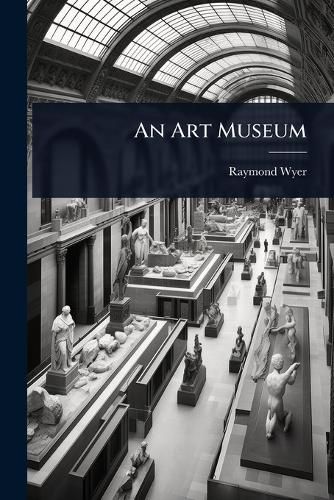Readings Newsletter
Become a Readings Member to make your shopping experience even easier.
Sign in or sign up for free!
You’re not far away from qualifying for FREE standard shipping within Australia
You’ve qualified for FREE standard shipping within Australia
The cart is loading…






a??An Art Museum: Its Concept and Conducta?? explores the fundamental principles and practical considerations behind establishing and managing a successful art museum. Penned by Raymond Wyer, this volume delves into the philosophies that underpin art collections and exhibitions, offering insights into how museums can effectively engage with the public and contribute to cultural understanding. The book references numerous artists including Walter Shirlaw, Henri Le Sidaner, Willem Maris, Josef Israels, G. W. Lambert, John Constable, Paul Dougherty, Frank Brangwyn, Thomas Gainsborough, Jo Davidson, William Hogarth, Mortimer Menpes, Whistler, Dwight W, Corot, Weissenbruch, Goya, and Hackley Gallery. This enduring work remains relevant for museum professionals, art historians, and anyone interested in the dynamics of art presentation and preservation.
This work has been selected by scholars as being culturally important, and is part of the knowledge base of civilization as we know it. This work was reproduced from the original artifact, and remains as true to the original work as possible. Therefore, you will see the original copyright references, library stamps (as most of these works have been housed in our most important libraries around the world), and other notations in the work.
This work is in the public domain in the United States of America, and possibly other nations. Within the United States, you may freely copy and distribute this work, as no entity (individual or corporate) has a copyright on the body of the work.
As a reproduction of a historical artifact, this work may contain missing or blurred pages, poor pictures, errant marks, etc. Scholars believe, and we concur, that this work is important enough to be preserved, reproduced, and made generally available to the public. We appreciate your support of the preservation process, and thank you for being an important part of keeping this knowledge alive and relevant.
$9.00 standard shipping within Australia
FREE standard shipping within Australia for orders over $100.00
Express & International shipping calculated at checkout
a??An Art Museum: Its Concept and Conducta?? explores the fundamental principles and practical considerations behind establishing and managing a successful art museum. Penned by Raymond Wyer, this volume delves into the philosophies that underpin art collections and exhibitions, offering insights into how museums can effectively engage with the public and contribute to cultural understanding. The book references numerous artists including Walter Shirlaw, Henri Le Sidaner, Willem Maris, Josef Israels, G. W. Lambert, John Constable, Paul Dougherty, Frank Brangwyn, Thomas Gainsborough, Jo Davidson, William Hogarth, Mortimer Menpes, Whistler, Dwight W, Corot, Weissenbruch, Goya, and Hackley Gallery. This enduring work remains relevant for museum professionals, art historians, and anyone interested in the dynamics of art presentation and preservation.
This work has been selected by scholars as being culturally important, and is part of the knowledge base of civilization as we know it. This work was reproduced from the original artifact, and remains as true to the original work as possible. Therefore, you will see the original copyright references, library stamps (as most of these works have been housed in our most important libraries around the world), and other notations in the work.
This work is in the public domain in the United States of America, and possibly other nations. Within the United States, you may freely copy and distribute this work, as no entity (individual or corporate) has a copyright on the body of the work.
As a reproduction of a historical artifact, this work may contain missing or blurred pages, poor pictures, errant marks, etc. Scholars believe, and we concur, that this work is important enough to be preserved, reproduced, and made generally available to the public. We appreciate your support of the preservation process, and thank you for being an important part of keeping this knowledge alive and relevant.